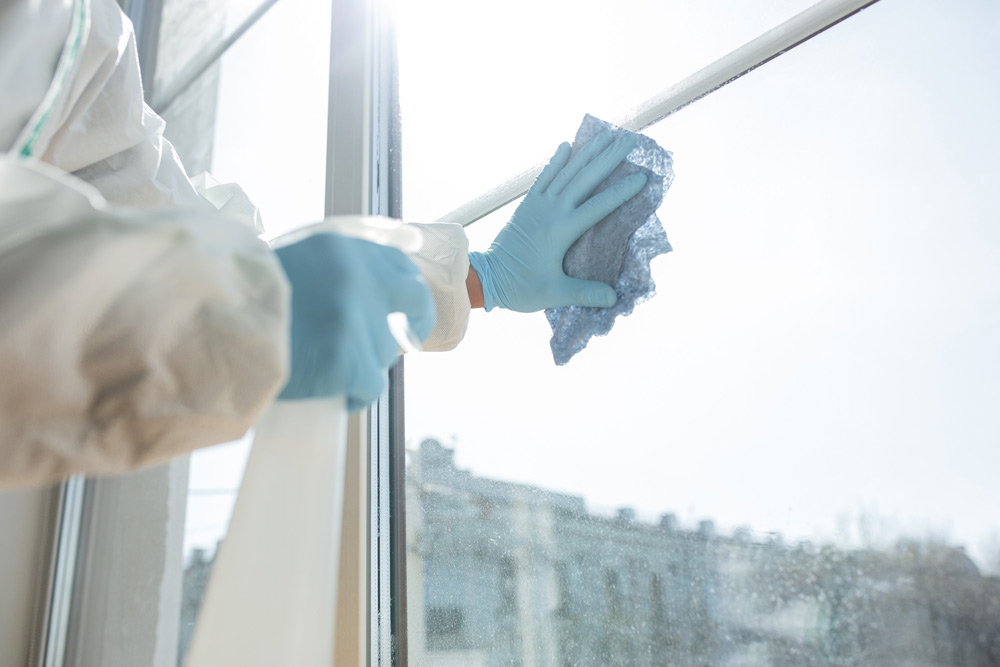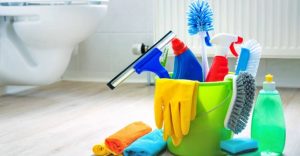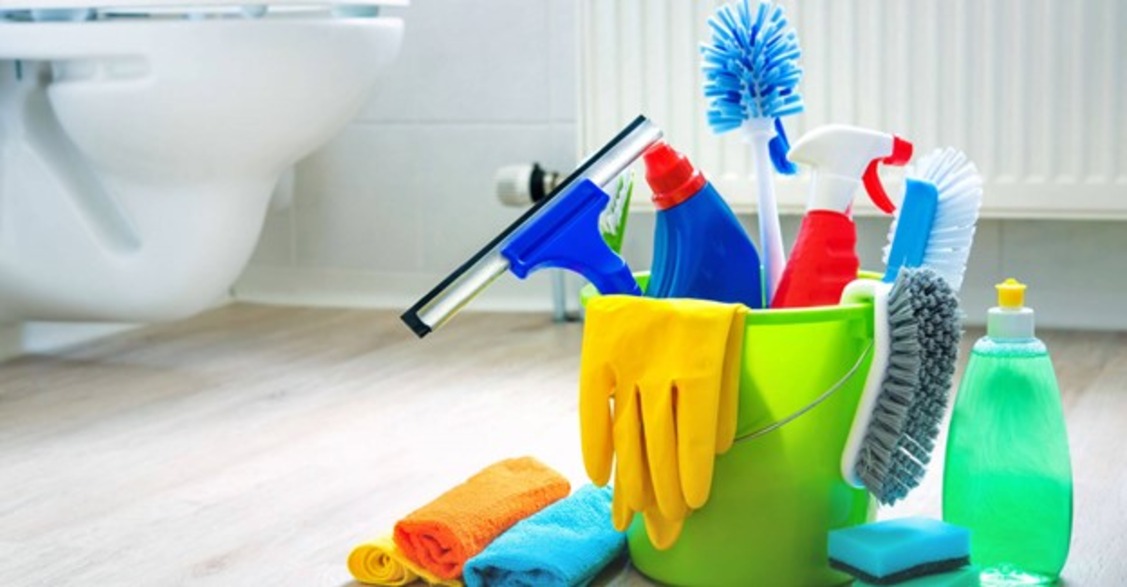However, even the most skilled teams can inadvertently overlook certain aspects of an effective cleaning regime.
If you’re in charge of an aged care facility, you have a duty of care to ensure a very high standard of hygiene, even on hard-to-clean areas and furnishings.
In this article, we will explore the 9 key areas where you really must clean to hospital-grade standards. One touchpoint missed could lead to an infection outbreak – a considerable worry particularly when Covid-19 is still a threat to your elderly residents.
Key Areas to Clean in Nursing Homes and Aged Care Facilities
This checklist should serve you and your team well, ensuring you have cleaned and disinfected every area you can. For an even more detailed resource, download our infection control guide.
Vital Cleaning Areas in Nursing Homes
Cleaning and sanitising your nursing home to a hospital standard means you can ensure rigorous infection control. This is critical for an aged care facility faced with today’s hygiene challenges – high-quality cleaning reduces the risk an outbreak could pose to both your residents and staff
1. Floors
In addition to leaving a negative impression of your facility, a dirty floor can harbour microbes making it a transfer point for microbial contamination, as people often rest their personal items on the floor and then move them onto other surfaces such as tables or beds.
The recommended method for floor cleaning in aged care facilities is the dry and wet mop method. First, a dry mop with a microfibre head is used to trap and remove any dirt and reduce the following wet mop spreading grime around. This is then followed by a thorough wet mop to comprehensively clean and disinfect the floors.
Speciality cleaning mops such as the imop provide even deeper cleaning, more quickly and efficiently (plus providing 90% cleaner surfaces) than conventional mopping.
2. Shiny, Non-porous Surfaces
For non-porous surfaces such as tile and stainless steel, infection control is a must. In aged care facilities, hospital grade surface disinfectant cleaners will kill viruses and bacteria on these surfaces. We recommend Biosan II due to its efficacy and reliability in healthcare environments, as verified by the TGA.
On these surfaces, allowing the cleaner to air dry enables the maximum dwell time so the disinfectant can get to work killing the surface microbes without being wiped away.
With shiny surfaces like stainless steel, use a non-smear solution like Kwiksan and wipe over with a non-absorbent chux style cloth to prevent watermarks. A non-absorbent cloth will ensure that enough disinfectant is left on the surface to continue killing bacteria even after it has been wiped down.
3. Hard, Porous Surfaces
For furniture made out of porous material such as timber and vinyl, disinfection protocols require the surface to be thoroughly wetted to ensure the cleaning solution penetrates deeply enough to kill germs.
Due to the porous nature of the surface, microbes can remain in small cracks, so a thorough wetting of the area is necessary in order to penetrate deep into the material.
Wiping in circular motions should also disturb the surface enough to remove any dirt or debris from the pores of the surfaces.
4. Kitchen Surfaces
A critical area for hygiene is in the kitchen. Areas where food is prepared should have special care attended to them and the use of food-safe disinfectants is crucial for the health of your nursing home residents – and the taste of their meal.
The process for kitchen cleaning should first be to wipe down surfaces, then secondly to disinfect the area, with all key touchpoints being cleansed and the required dwell time being adhered to.
The K44 Quat Sanitiser is a specially formulated sanitiser for kitchen surfaces in any catering establishment. It uses a benzalkonium chloride base which provides effective microbicidal activity, critical for the reduction of contamination and the associated risk of food poisoning.
5. Walls & Ceilings
Ceilings and walls are exposed to all sorts of dirt and dust, and in certain environments even cooking oils, grease, smoke, and more. Air-conditioning and ventilation can also spread dust and dirt from the ceilings throughout your aged care establishment.
As a more difficult area to clean, they are often overlooked or even avoided altogether. A microfibre mop such as i-fibre can make this process easier, with an exceptionally absorbent mop head and a manoeuvrable head that allows you to get into hard-to-reach areas.
Whole room disinfection through the use of a fogger is also a great option for ensuring those difficult to reach areas are sterilised. A fogger creates and disperses disinfectant as an incredibly fine aerosol mist that kills all microorganisms on every surface of the room. This approach provides a thorough clean without extensive manual cleaning, as the tiny droplets are small enough to reach all areas of the room.
6. Air
We all know that indoor air quality is unhealthier than outside and can be the cause of increased symptoms of asthma and allergies as well as triggering headaches and fatigue.
In fact, a State of the Environment study conducted by the Australian government found that “weekly average concentrations of carbon dioxide, carbon monoxide, nitrogen dioxide, formaldehyde, other carbonyls, BTEX and total VOCs to be higher indoors than outdoors.”
Good ventilation is key to combating this, especially with our current awareness of viral airborne transmission. For example, droplets of the coronavirus are now being understood to linger in the air for up to 3 hours. Today, your air sterility is just as important as your floors.
But ventilation alone is not enough, especially in aged care facilities where aged care residents want to have control over whether their windows are open or shut.
Air purification filters can provide a clean air solution for your nursing home. The i-air Pro is capable of filtering out all solid contaminants and microbic droplets as well as breaking down volatile organic compounds – harmful gases that are emitted from common materials such as paint, lacquer or carpet.
7. Touchpoints
A critical stage in any cleaning schedule is how often you wipe down and disinfect high traffic touchpoints in your aged care facility’s resident’s rooms, communal areas, and corridors. This also should include high traffic areas for your staff. For example, the door handles to the staff rooms could be harbouring germs that will, in turn, affect other high-touch objects.
The key takeaway is that touchpoints need extra priority allocated to them and will need more sanitisation alongside your routine daily cleans.
We’ll also highlight here that your cleaners should avoid the use of cotton and microfibre cloths. Although they are great for trapping dust, they can have a negative effect on the efficacy of your disinfectant because they soak up the solution and prevent it from remaining on the surface and killing more bacteria.
8. Electronic and Other Sensitive Surfaces
TV screens, monitors, tablets and other electronic equipment are all hydrophobic surfaces. These sensitive objects all need special treatment when it comes to surface cleaning in aged care facilities. It’s important to check that the disinfectant you’re using won’t damage your sensitive items. For hydrophobic items, we recommend an alcohol-based disinfectant.
Kwiksan is a hospital-grade alcohol cleaning spray designed for the rapid killing of pathogenic microorganisms on hydrophobic surfaces such as electronics.
For other sensitive surfaces, such as polished, brass, copper, paint or pH-sensitive surfaces, similarly, ensure the cleaner is non-corrosive or reactive before use.
For both situations, apply disinfectant indirectly by pre-moistening a cloth or using wipes.
9. Soft, Porous Surfaces
In nursing homes and aged care facilities, it’s important to clean comfortable surfaces such as soft furnishings, carpets and upholstery. These soft, porous surfaces can harbour many germs and microbes, however, they need to be disinfected in a way that doesn’t stain or damage the fabric.
For smaller spills, simple spot cleaning can remove stains. However, for bigger spills or more involved cleaning, a steam cleaning method provides deep, penetrating sanitisation that eliminates viruses and bacteria.
As discussed in our section about cleaning walls and ceilings, the use of a fogger can also disinfect carpets and soft furnishings quickly and effectively. This is due to the small droplets being able to penetrate porous surfaces efficiently, offering better coverage than a spray-and-wipe approach.
Ensure your cleaners have done all they can
At Veridia, we take care of all the details in aged care facilities like yours when it comes to providing hygiene and cleaning solutions. Find out more about how you can ensure due diligence in your nursing home by reading our detailed guide to surface disinfection.
You can find out more about our comprehensive range of infection control products here, or contact our professional team for advice on the right solutions for your business.






